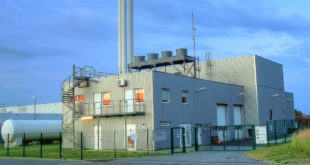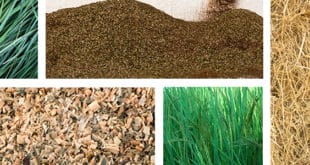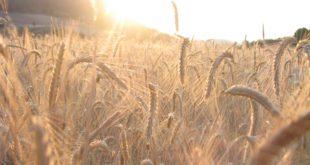Crafting a better enzyme cocktail to turn plants into fuel faster
Tapping fungus to unlock energy
Scientists looking to create a potent blend of enzymes to transform materials like corn stalks and wood chips into fuels have developed a test that should turbocharge their efforts.
The new research, published in October in the journal Molecular BioSystems, is part of a worldwide effort to create fuels from plants that are plentiful and aren’t part of the food supply. It’s possible to do this today, but the process is costly, laborious and lengthy. The findings by chemists and colleagues at the Department of Energy’s Pacific Northwest National Laboratory open the possibility that laboratory research that now takes months could be reduced to days, and that scientists will be able to assess more options for biofuel development than is possible today.
Many of today’s efforts revolve around the fungus Trichoderma reesei, which introduced itself to U.S. troops during World War II by chewing through their tents in the Pacific theater. Seventy years later,T. reesei is a star in the world of biofuels because of its ability to churn out enzymes that chew through molecules like complex sugars.
The breakdown of large sugar polymers into smaller compounds that can then be further converted to fuel compounds is the final, crucial step in the effort to make fuels from materials like switchgrass and corn stalks. These plants and many others are full of energy, stored in carbon bonds, which can be converted into fuel, if scientists can find ways to free the compounds that store the energy from the tough structural material, known as lignocellulose, which holds the plants together.
Lignocellulose is what stands between you and a tankful of fuel created from corn stalks or switchgrass.
“The ultimate goal is to begin with a plant material like corn stalks, for instance, and to subject it to a cocktail of enzymes that would convert those plants to fuel,” said chemist Aaron Wright, who led the PNNL team. “It takes a series of steps to do that, and the cost has to come down if these fuels are to compete seriously with traditional hydrocarbon-based fuels.”
T. reesei chews through materials naturally, cutting through the chemical “wrapping” much like a person with scissors cuts through a tightly wrapped ribbon around a gift, freeing the inner contents for enjoyment. The fungus actually makes dozens of cutting enzymes, each of which attacks the wrapping differently. Chemists like Wright are trying to combine and improve upon the best ones to create a potent chemical cocktail, a mix of enzymes that accomplishes the task super efficiently. That would bring down the cost of producing biofuels.
Wright’s study focused on a subset of the fungus’s collection of cutting tools, on enzymes known as glycoside hydrolases. It’s their job to break down complex sugars into simple sugars, a key step in the fuel production process.
To assess the effectiveness of mixtures of these enzymes, scientists must either measure the overall performance of the mixture, or they must test the component enzymes one at a time to see how each reacts to different conditions like temperature, pressure and pH.
Wright’s team developed a way to measure the activity of each of the ingredients simultaneously, as well as the mixture overall. Instead of needing to run a series of experiments, each focusing on a separate enzyme, the team runs one experiment and tracks precisely how each of dozens of enzymes reacts to changing conditions.
A series of experiments detailing the activity of 30 enzymes, for instance, now might be accomplished in a day or two with the new technology, compared to several months using today’s commonplace methods, the scientists say.
The key to the work is a chemical probe the team created to monitor the activity of many enzymes at once. The heart of the system, known as activity-based protein profiling, is a chemical probe that binds to glycoside hydrolases and gives off information indicating just how active each of those enzymes is moment by moment.
“Identifying exactly which enzymes are doing most of the work you need done is crucial for making this an economical process,” said Wright. “We’re trying to keep tabs on the precise activity of every enzyme as each goes through a very complex process, as conditions like temperature and pH vary, to measure their activity through each stage.”
“We can test the whole mixture, and we can also tease out each individual contribution. People have not been able to do that all at once before,” added Wright, whose study was funded by PNNL.
Many of the measurements for the study, such as the measures of protein activity using mass spectrometry, were done at EMSL, the DOE’s Environmental Molecular Sciences Laboratory on the PNNL campus. Wright’s team included Lindsey Anderson, David Culley, Beth Hofstad, Lacie Chauvigné-Hines, Erika Zink, Samuel Purvine, Richard Smith, Stephen Callister, and Jon Magnuson, all of PNNL.
Reference: Lindsey N. Anderson, David E. Culley, Beth A. Hofstad, Lacie M. Chauvigné-Hines, Erika M. Zink, Samuel O. Purvine, Richard D. Smith, Stephen J. Callister, Jon M. Magnuson and Aaron T. Wright, Activity-based protein profiling of secreted cellulolytic enzyme activity dynamics inTrichoderma reesei QM6a, NG14, and RUT-C30, Molecular BioSystems, Oct. 9, 2013, DOI: 10.1039/c3mb70333a.
 Alternative Energy HQ solar power for homes, wind energy, and bio fuel issues
Alternative Energy HQ solar power for homes, wind energy, and bio fuel issues


 Skinny Fiber….so much more than your a
Skinny Fiber….so much more than your a
 Magnesium From Seawater Will Make Fuel-Efficient Transportation Cheaper
Magnesium From Seawater Will Make Fuel-Efficient Transportation Cheaper




